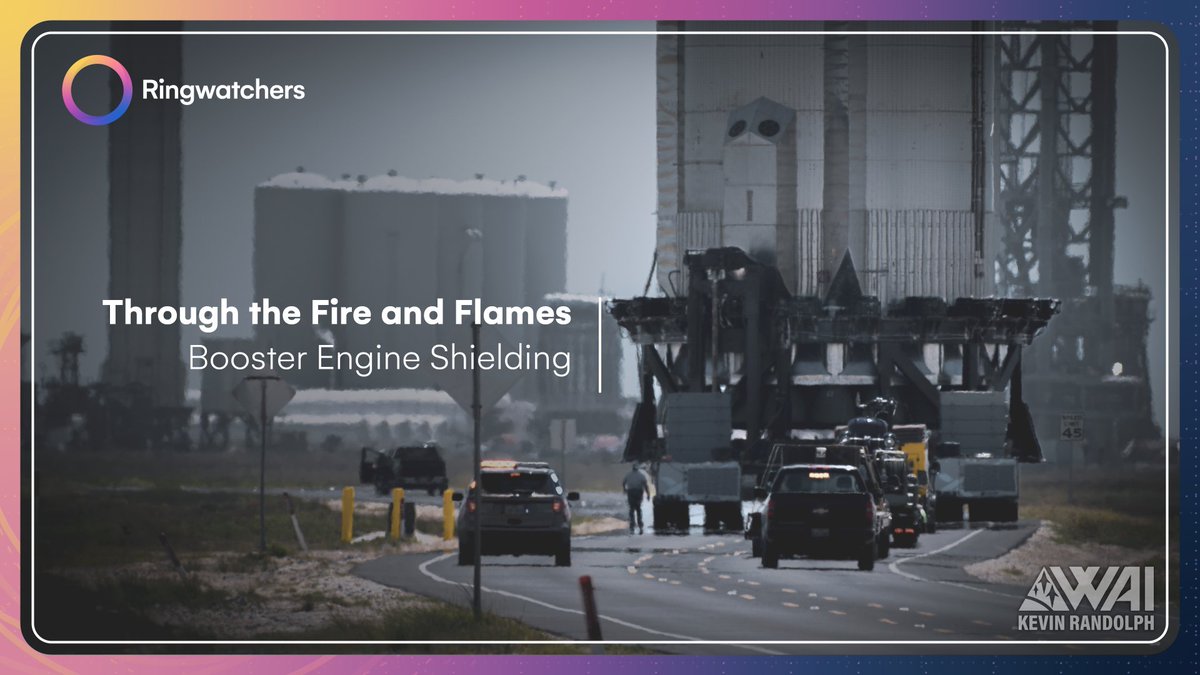With this new photo from Elon Musk, there’s been a lot of discussion about what exactly we’re seeing. Today’s quick thread is going to go a bit deeper into what we can learn from this photo. (1/10)
https://twitter.com/elonmusk/status/1678205301349130240
For starters, let’s figure out the positioning of things. The Quick Disconnect is located in the upper right of the photo, and aft flaps can be identified from the frames the motors sit in. This means that the tiled side is on the lower left of this photo. (2/10)
📸 @elonmusk
📸 @elonmusk
We can immediately see the Hydraulic Power Unit that powers Ship 25’s Thrust Vector Control in the lower left of this image. Ship 25 is the last Starship to use this, as B9+ and S26+ use an electric TVC system. (3/10)
📸 @elonmusk
📸 @elonmusk
We can also see what appears to be a battery on the direct left of the photo, likely powering various subsystems on the Ship. This is actually the first battery we’ve seen on the modern version of Starship, and there's likely more hiding elsewhere. (4/10)
📸 @elonmusk
📸 @elonmusk
Looking at the dome itself, we can see a white insulation layer to prevent frost from building up on the exterior, which would create a pretty wet environment once the engine shielding is properly installed. (5/10)
📸 @elonmusk
📸 @elonmusk
Ship 25’s engine shielding was removed right after the 6-engine static fire and was slightly revised compared to Ship 24. It may just be removed for inspections, or maybe it’s being redesigned. (6/10)
📸 @elonmusk, @RGVaerialphotos
🖼️ @ChameleonCir
📸 @elonmusk, @RGVaerialphotos
🖼️ @ChameleonCir
Off to the upper right, we can see what seems to be an onboard camera inside the skirt. This would line up with the false ceiling that the engine shielding creates, and would give a view that should look something like this. (7/10)
📸 @elonmusk
🖼️ @ChameleonCir
📸 @elonmusk
🖼️ @ChameleonCir
You can also see that the RVac static firing stiffeners are anchored into the test stand. These prevent the engine bells from being damaged or destroyed due to flow separation and are removed before flight. (8/10)
📸 @elonmusk, @RGVaerialphotos, @CosmicalChief for @FelixSchlang
📸 @elonmusk, @RGVaerialphotos, @CosmicalChief for @FelixSchlang
Another interesting note is that the COPVs in the skirt, which were possibly related to engine startup, either moved or have been deleted. It’s unclear what else has changed to accommodate this. (9/10)
📸 @LenosGarage, @elonmusk
📸 @LenosGarage, @elonmusk
Those are some of the simple things we’ve seen in this photo, and while there are some other things, many of them get into some heavy speculation that can’t be proven. If you’ve noticed anything else, make sure to post it down below. (10/10)
• • •
Missing some Tweet in this thread? You can try to
force a refresh

 Read on Twitter
Read on Twitter









